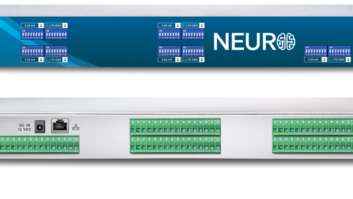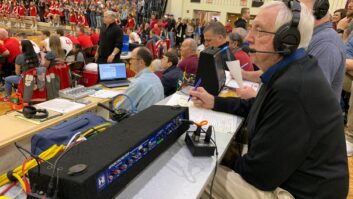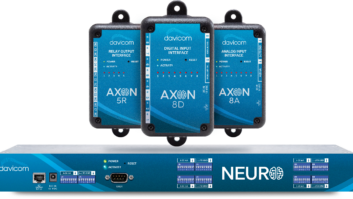Fixed Cellular Terminals at Remote Sites
Jul 1, 2011 1:00 AM, By Doug Irwin, CPBE AMD
Some rural transmitter sites are so rural they can’t support a reliable connection to the PSTN. It’s clear that a transmitter site needs a telephone – at the very least for safety sake, but also for communications needs such as a dial-up remote control. Perhaps you are soon to be stuck with a transmitter site like this, or perhaps you’ve already got one and you need ideas. If so read on.
In the old days before the cellphone network came in to being, you had to rely on a pair of wires running down the hill to the nearest B box. (This is was even worse when you had a stereo pair running down the hill.) That was often fraught with peril, especially in the winter; lines could get noisy, or knocked out all together and the telephone company couldn’t make it out because of muddy roads. Ahh, the good old days!

Telular SX7T
When cell sites became more and more prevalent it wasn’t long before engineers wanted to use them for remote-site communications. Still, it wasn’t easy, even in the analog-cell days. Today PCS has replaced all of that, and the device that you need to consider is known as a fixed cellular terminal. There are multiple vendors for this type of device, but one that has been around a while is Telular. Its website lists the various units, but of special interest is the SX7T which can make use of GSM or HSDPA and is reportedly carrier agnostic. This device not only allows you to connect a plain old telephone, but also allows you to set up a small LAN and make use of it as an Internet connection (assuming your carrier supports that).
As anyone who has tried to use a cellphone at a mountain top site knows, often coverage is spotty (if it is there at all). It always seems that there are too many cell sites for a phone to choose from, and none are really good enough for a decent call. So if you elect to go with an FCT, make sure you get one with antenna connectors on it so that you can use an external antenna. (The SX7T allows for this, with type TNC connectors). Directional antennas for cellphone use are easy to find – try Cellantenna for example. It’s clear that before you purchase an antenna such as this you’ll need to know which band your carrier uses. Mount the antennas outdoors, and then by experimentation you should be able to determine which cell site to point leave the antennas pointed at.

Cellantenna CAY807
If you happen to have a radio link with T-1 capability at your site already then your choices are more favorable. The Harris/Intraplex system has plug-in modules for its mainframe that will pass voice-data; they can be configured for OPX or even for ring-down. The modules are VF-15 (FXO) and VF-16 (FXS). The Worldcast Oslo also has FXO/FSO plug-in modules for its frames that will handle voice data.
A final option to consider is Internet connectivity provided by means of an unlicensed, spread-spectrum link from your studio to the transmitter site. (As anyone who has used a link such as this knows, your results may vary, even day to day.) Once you’ve done that, set up a VoIP service such as Vonage (as one example). This kind of service comes with a small Ethernet to POTS converter; all you need do is to give it an IP address, connect it via Ethernet to your Internet connection, and plug in a telephone. No need to open ports on a router that you may have, because the converter box establishes a connection with your provider, using port 80, and keeps it open.
Irwin is transmission systems supervisor for Clear Channel NYC and chief engineer of WKTU, New York. Contact him at [email protected].
Resources
Cellantenna
cellantenna.com
Telular
www.telular.com
Vonage
www.vonage.com
July 2011
Digital routing and mixing, a look inside the new facilities of BYU, Field Reports on the Mackie Onyx Blackbird and Belar FMHD-1 and more….











